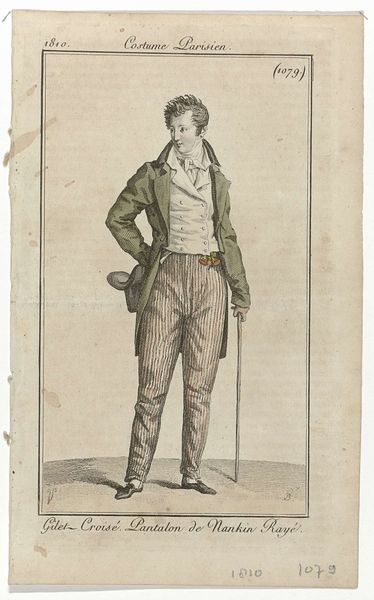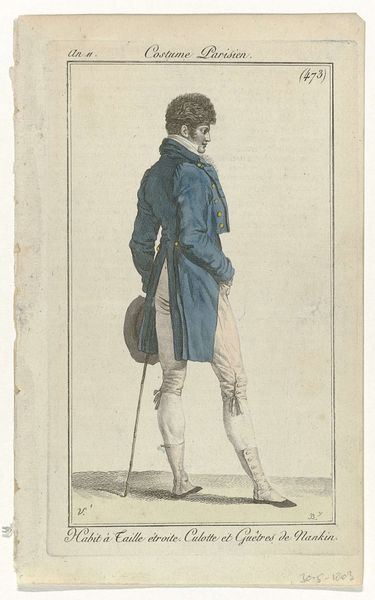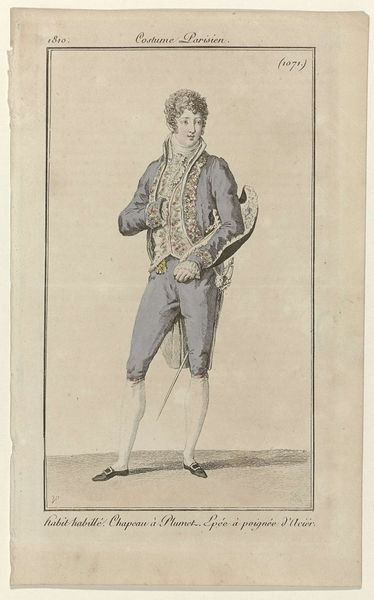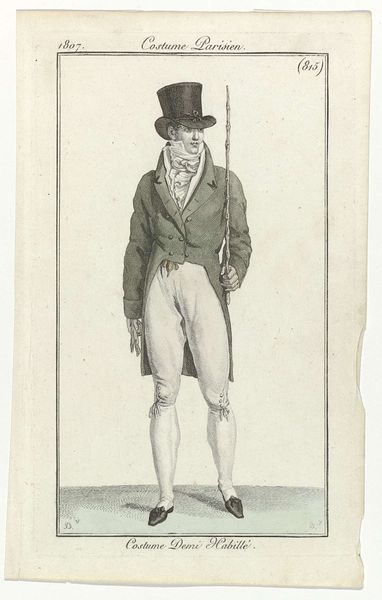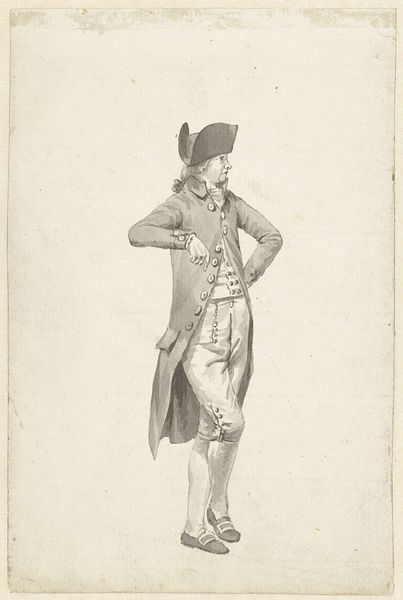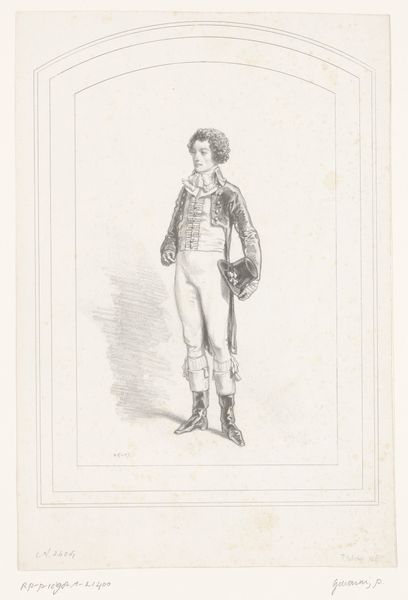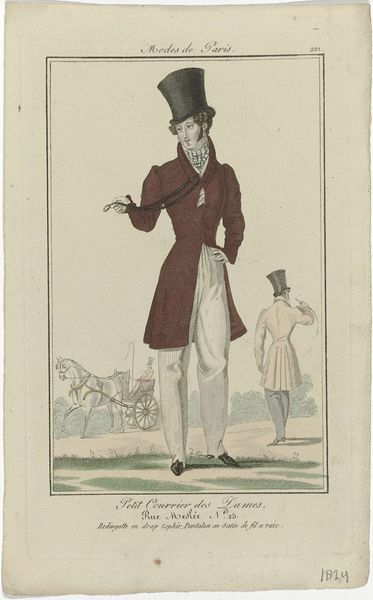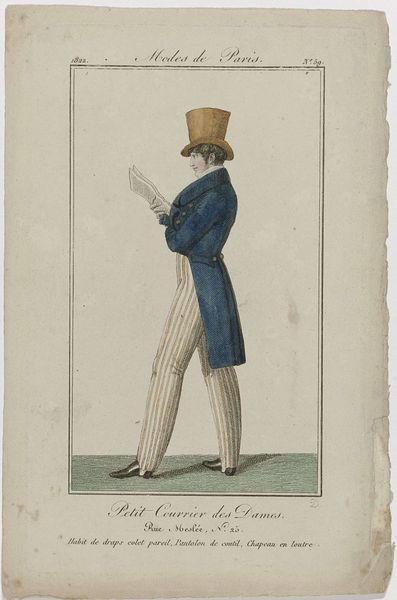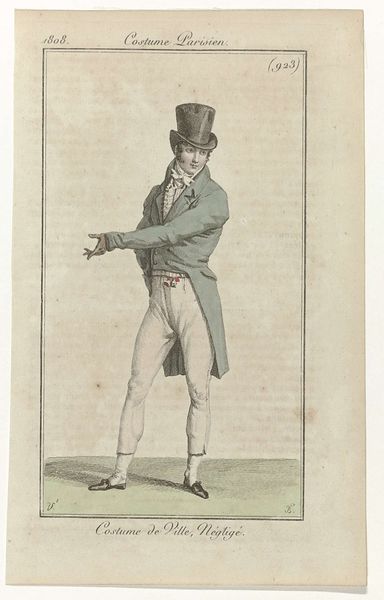
print, engraving
#
portrait
# print
#
romanticism
#
genre-painting
#
engraving
Dimensions: height 194 mm, width 119 mm
Copyright: Rijks Museum: Open Domain
Curator: Editor: So, this print is called "Petit Courrier des Dames, 1822, No. 45 : Habit de draps collet…" by August Delvaux. It seems to depict men's fashion. The gentleman looks like he’s posing, right? Almost like he’s… for sale? What stands out to you when you look at this work? Curator: I’m interested in the text below the image – the descriptions of the fabric. 'Habit de drape collet de velours, gillet en poil de chèvre, pantalon de drape de coton’...it gives insight into 19th century modes of production and consumption. How would a consumer at the time view these goods, knowing what materials were readily available and what it would cost them? Editor: So, you’re saying it’s less about the *style* and more about what it says about industry and class? Curator: Precisely! Consider the layers here: from raw materials to the finished garment, to the craftsman involved and how all of those elements contributed to this man's 'look'. The image even gives the address where one can purchase such garments, essentially illustrating consumer culture at work. Delvaux here is less an artist and more an observer, don't you think? Editor: Absolutely! He’s illustrating the relationships between the materials, the laborers, and the aspiring bourgeois gentleman. It makes me consider who was left out of this image, too, the garment workers! Curator: And this brings into focus the social dynamics embedded in what would normally be overlooked. Even his pose reinforces that access. Does seeing this work as a production offer a fresh perspective? Editor: It completely does! Instead of just seeing a fashion plate, I’m considering the whole socioeconomic system. I learned more than I expected. Thanks for the guidance. Curator: Likewise. Looking closely at materials and how they relate to a social-economic system opens the conversation beyond simple aesthetic appreciation.
Comments
No comments
Be the first to comment and join the conversation on the ultimate creative platform.
